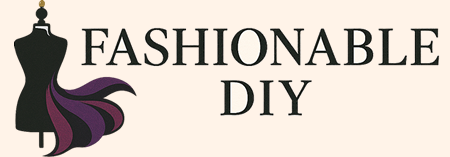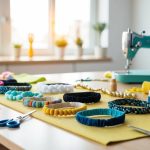Revamp Your Headbands: DIY Accessories for Every Season
Design Inspiration and Planning
Crafting unique headbands involves exploring fashionable themes and timeless influences. Seasonal trends introduce fresh colors and materials, while iconic styles bring beloved characters like Hello Kitty into design choices.
Seasonal Trends
Headbands reflect the spirit of each season, making them versatile accessories. Spring introduces pastel hues and floral motifs, creating a sense of renewal. In summer, vibrant colors and lightweight fabrics like cotton keep it cool and stylish. Autumn’s rich earth tones provide warmth, with textures such as wool adding depth. Finally, winter embraces darker shades and luxurious materials, like velvet, for a sophisticated look.
These seasonal influences ensure headbands remain both trendy and fitting for the time of year.
Iconic Styles: Hello Kitty and More
Iconic styles, such as those inspired by Hello Kitty, add character and charm to headband designs. The Hello Kitty aesthetic, with its playful and cute elements, appeals to a wide audience, particularly among fans of Japanese pop culture. Incorporating graphics of Hello Kitty on headbands makes for a fun, nostalgic accessory that resonates with both children and adults.
In addition to Hello Kitty, motifs from classic films or timeless themes bring a sense of familiarity and artistry to headbands. These designs captivate with their enduring appeal and cultural significance.
Basic Headband Construction
Creating a stylish headband begins with simple yet essential materials. Choose a fabric that suits the occasion and season. Knit fabrics are popular for their elasticity and comfort, making them perfect for headbands. They require minimal sewing for a smooth finish.
Start by cutting a strip of fabric. The length should be slightly larger than the circumference of the head to ensure a snug fit. The width can vary depending on personal preference but typically ranges from 2 to 4 inches.
Fold the fabric lengthwise with the right sides facing inward. Sew along the open edge using a straight stitch. This creates a tube with the seam on the inside. Turn the fabric right side out to hide the seam.
For a neat finish, the ends of the tube are brought together and stitched. This can be done by folding one end inside the other before sewing. Some DIY enthusiasts prefer a decorative knot at the top, while others opt for a flat look. Each style offers its own unique flair.
With the basics mastered, experimentation with different fabrics and styles can lead to a range of personalized headbands suitable for any season or occasion.



